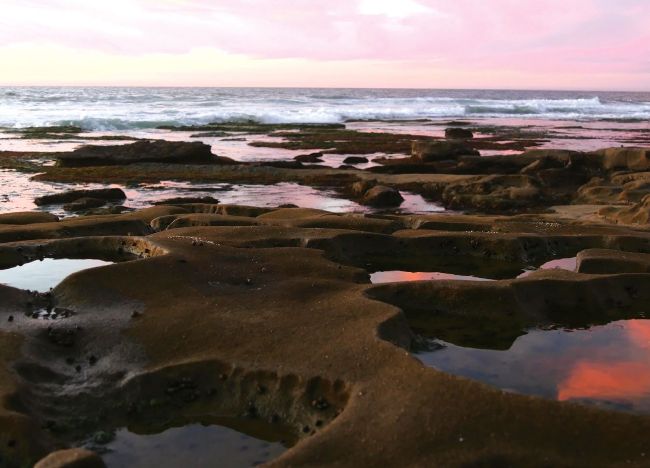WHY DO WE HAVE TIDES?
How the positions of the Sun and Moon dictate when the sea is high or low
WORDSAILSA HARVEY

Filled rock pools are left behind after the tide goes out
If you visit the same beach at different times on the same day, you will probably find that the shoreline dramatically transforms. One moment there could be a vast expanse of beach, but just a few hours later this could be concealed by the ocean as waves roll right up to meet the shore. These are Earth’s changing tides.
When the tide is high, the ocean’s water has shifted to make the water rise at that location on the planet. The sea is being drawn towards the Moon due to its gravitational pull, which is weaker than Earth’s gravity but still strong enough to affect the oceans. As Earth rotates during the day, tides shift. When a region of Earth is facing the Moon, or is at the opposite side to the Moon, the tide is highest in that region. One tide cycle is about 24 hours and 50 minutes, and in most locations consists of two high tides and two low.